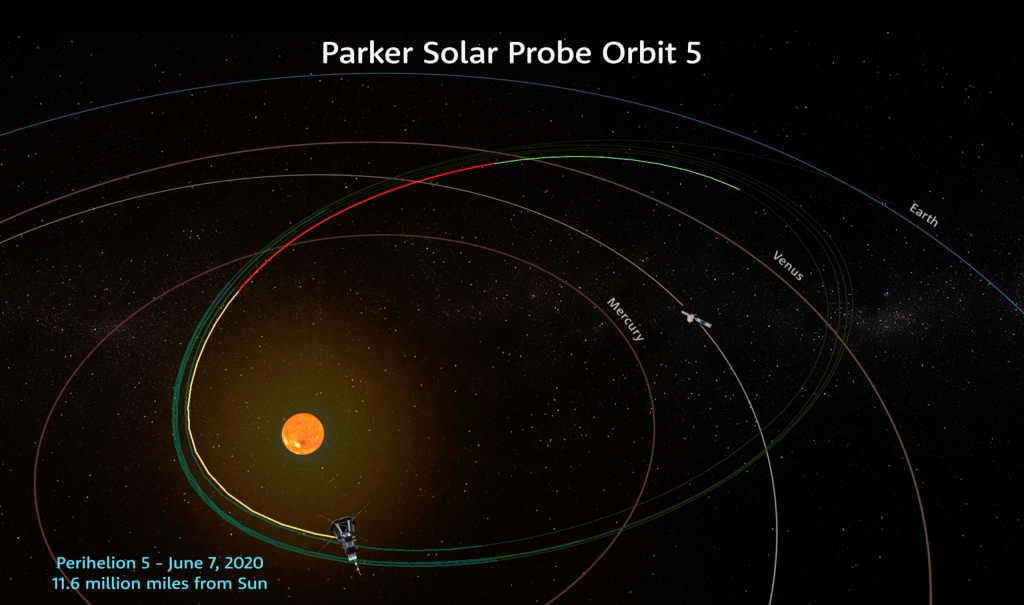Data from Parker Solar Probe’s fifth orbit around the Sun is now available to the public.
This latest batch of science data was collected by Parker Solar Probe’s four instrument suites this past summer, and covers the mission’s fifth solar encounter — including closest approach to the Sun, called perihelion, on June 7— and a special observation period for the mission’s third Venus flyby in July.
The data can be accessed through NASA’s Space Physics Data Facility (SPDF) and Solar Data Analysis Center (SDAC), the APL Parker Solar Probe Gateway, and the Science Operation Centers of the four science investigation teams (the University of California, Berkeley; Princeton University; Harvard-Smithsonian Center for Astrophysics; and the Naval Research Laboratory).

In September, Parker Solar Probe completed its sixth solar encounter. Data from this sixth encounter will be released in February 2021, and early review by the science team has already revealed the mission’s first observation of a sungrazing comet.
Next year will be record-setting for Parker Solar Probe. Starting in January, the spacecraft, built and operated by the Johns Hopkins Applied Physics Laboratory in Laurel, Maryland, will embark on four solar encounters and two Venus flybys throughout 2021. The spacecraft will travel even closer toward the Sun’s blazing atmosphere, capturing unprecedented data on solar activity and breaking its own speed and distance records multiple times in the process.
Parker Solar Probe’s next solar encounter — on Jan. 12-23, 2021 — will carry the spacecraft around the Earth-facing side of the Sun, providing an opportunity for joint observations with multiple ground-based observatories and several space missions. The coordinated observation campaign organized by the mission’s science team will include NASA’s Solar Dynamics Observatory and STEREO spacecraft, ESA’s BepiColombo, and ESA and NASA’s Solar Orbiter and SOHO missions.
By Justyna Surowiec
Johns Hopkins University Applied Physics Lab
